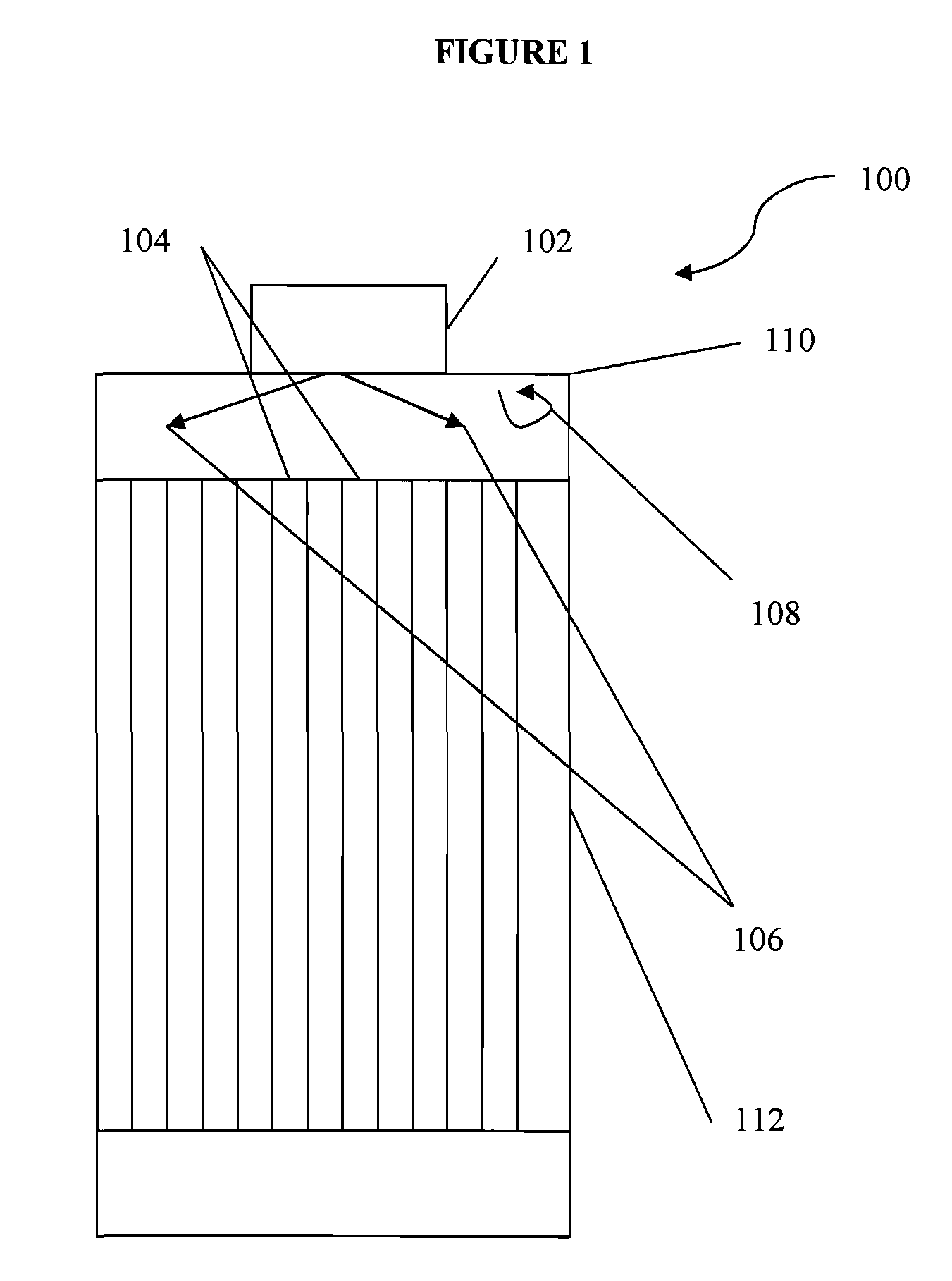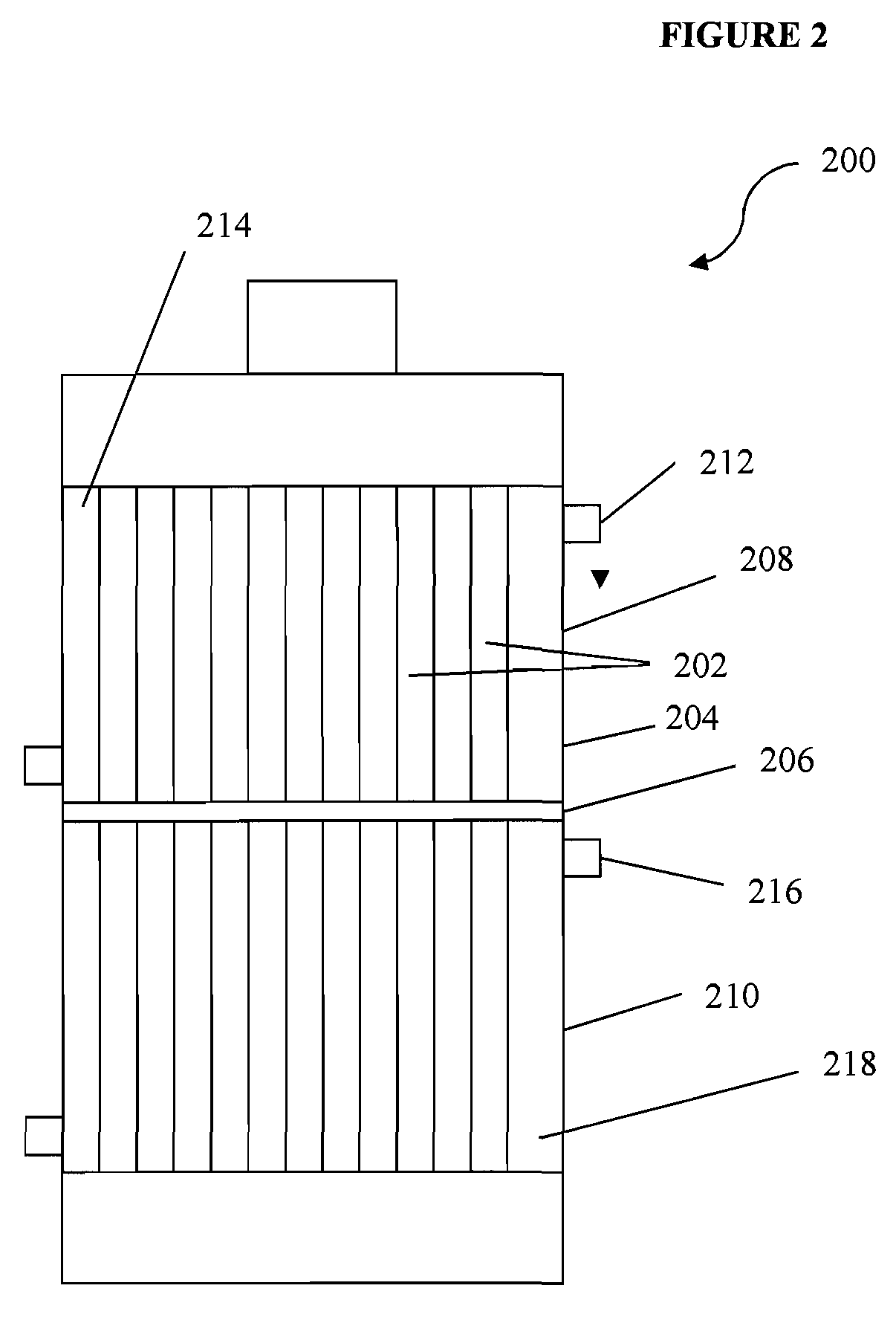Isothermal multitube reactors and processes incorporating the same
a multi-tube reactor and reactor technology, applied in the field of multi-tube reactors, can solve the problems of increased reaction rate, undesirable decrease in selectivity, and temperature control in multi-tube reactors, and achieve the effects of facilitating heat transfer, reducing the production of by-products, and accurate temperature control
- Summary
- Abstract
- Description
- Claims
- Application Information
AI Technical Summary
Benefits of technology
Problems solved by technology
Method used
Image
Examples
example 1
EXAMPLE 1A (COMPARATIVE)
[0062]A 1″ ID Hastelloy reactor is heated to from about 450° C. to about 480° C. Methyl chloride and perchloroethylene flow are established at from about 50 ml / hr to about 150 ml / hr and from about 180 ml / hr to about 123 ml / hr liquid flow respectively to achieve a residence time of from about 10 seconds to about 23 seconds.
[0063]The liquid feeds are evaporated separately and preheated to achieve the same temperature as the reactor temperature in the feed line before they are mixed in ½″ line before feeding into the reactor. The reactor pressure is set at about 14.7 psia. After ½″ feed line, the front section (conventional mixing zone) of the 1″ reactor was filled with Rashig rings at a depth of 2 inches to provide at least approximated plug flow and proper mixing.
[0064]Within about three hours, a hot spot of about 600° C. was measured and graphite was formed in the mixing zone, plugging the reactor. It appears that the temperature and the backmixing and / or rec...
example 1b
[0066]Another run in accordance with Example 1A produced at least 8% conversion of perchloroethylene at more than 90% selectivity to 1,1,2,3-tetrachloropropylene after the mixing temperature is reduced to 325° C., the 2 inch mixing zone is removed, and the heating zone is moved down stream at least 6-inches away from the entrance of the feed line of the reactor. This run shows that 325° C. is sufficiently low for the reaction kinetics to avoid the production of byproducts and carbon deposits in the zone just after the feed entrance to the reactor.
example 2
[0067]Chlorinated and / or fluorinated propenes having the formula CH2−c−gClcFg═CH1−d−hCldFh—CH3−e−fCleFfwherein c is 0-2, d is 0-1, e is 0-3, f is 0-3, and g is 0-2 while c+g≦2, d+h≦1, and e+f≦3 are prepared using a reactor utilizing an inlet temperature deviating from the desired reaction temperature by at least about 20° C. as follows. About 3000 schedule 40 1.5″ ID tubings at 60 ft long are used in this example. The desired feed, which will depend upon the desired chlorinated and / or fluorinated propene being prepared is provided to an isothermal multitube reactor. The feed is provided at a temperature that differs from the desired reaction temperature by at least about 20° C. by controlling the temperature of the inlet and / or controlling the temperature of the feeds. It is expected that the selectivity will decrease as the feed temperature is raised closer to the reaction temperature of around 375° C.
[0068]
TABLE 1FeedHx InletTemptempHx fluidProductivityExampleFeeds(° C.)(° C.)type...
PUM
| Property | Measurement | Unit |
|---|---|---|
| temperature | aaaaa | aaaaa |
| Reynolds number | aaaaa | aaaaa |
| temperature | aaaaa | aaaaa |
Abstract
Description
Claims
Application Information
 Login to view more
Login to view more - R&D Engineer
- R&D Manager
- IP Professional
- Industry Leading Data Capabilities
- Powerful AI technology
- Patent DNA Extraction
Browse by: Latest US Patents, China's latest patents, Technical Efficacy Thesaurus, Application Domain, Technology Topic.
© 2024 PatSnap. All rights reserved.Legal|Privacy policy|Modern Slavery Act Transparency Statement|Sitemap



